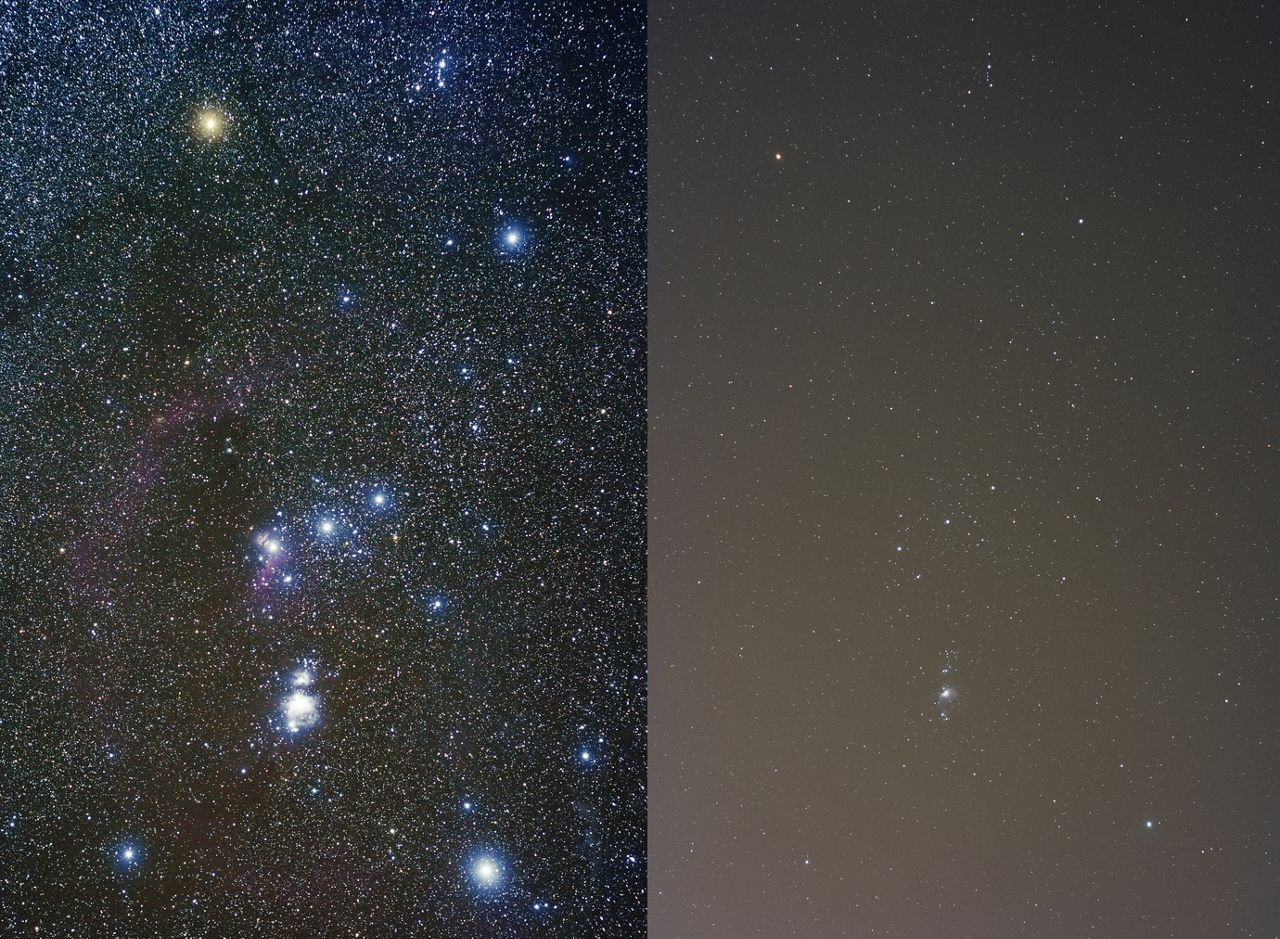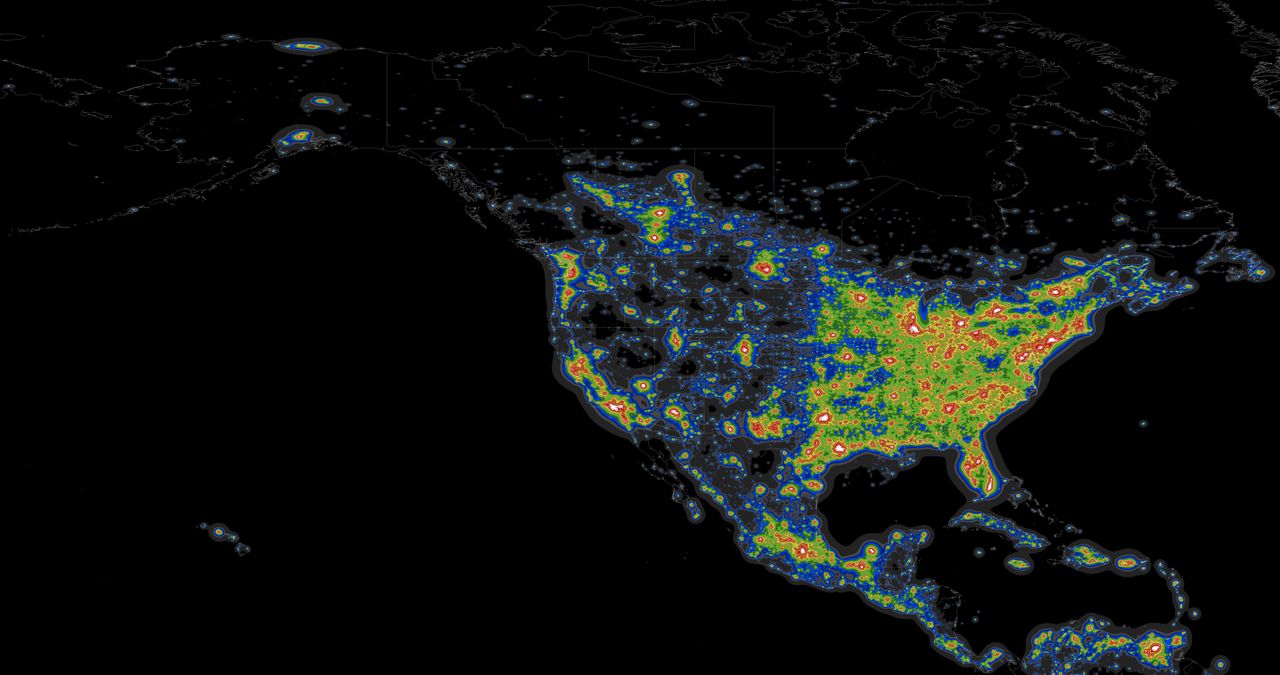If you live in or near a crowded city and have tried to see the stars or a meteor shower in the night sky, you probably had little luck. The reason is light pollution.
Light pollution is when urban centers, or larger, more populated cities, artificially brighten up the sky and give it a milky glow. That light pollution washes out the dark night sky, making it harder to see stars and constellations at night.
Light pollution is worst around major cities, which is why stargazers often travel to remote areas to get a clear look at the stars. Here is a map of North America with brighter colors on the map showing areas with the worst light pollution.
Light pollution map of North America. (Graphic by David Lorenz)
The map closely resembles a population density map. As the population grows and urban areas expand, there are very few areas left in the eastern U.S. with a naturally dark sky.
Here is an interactive light pollution map to get a closer look where you live.
The difference in the night sky between the bright areas on the map and the dark areas on the map is significant.
Here is an example with two photos of the constellation Orion, one in a dark sky area, the other near Provo, Utah, a populated metropolitan area.

(CC 2.0/Jeremy Stanley)
If you’re a stargazer, here are the best spots in each region around the U.S. to enjoy the night sky without light pollution.
Aside from missing out on the night sky, what other negative effects does light pollution have?
Artificial light can negatively affect public health and disrupt the circadian rhythm in not only people, but animals.
According to the American Medical Association, an increased amount of artificial light at night can lower melatonin levels in the body. It can cause sleep deprivation, fatigue, headaches, stress and anxiety.
Light pollution can also be detrimental to migratory birds, as lights can disorient them. The artificial light produced by urban areas causes difficulty for birds migrating in the spring and fall, making it hard to avoid obstacles.
It can cause birds to get thrown off their flight path, or even collide with other birds or glass windows that cause a reflection. During migratory periods in May and September, the St. Louis Arch goes dark to help birds safely navigate through the city.
If you live in an urban area, here are some ways you can help to protect migratory birds and prevent accidents.
Our team of meteorologists dive deep into the science of weather and break down timely weather data and information. To view more weather and climate stories, check out our weather blogs section.

